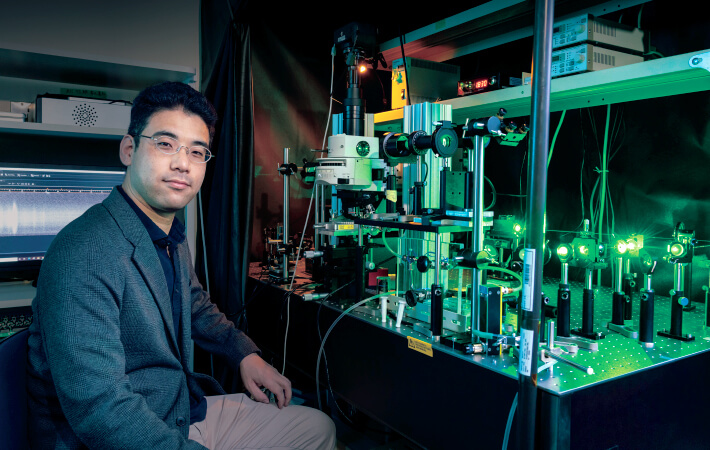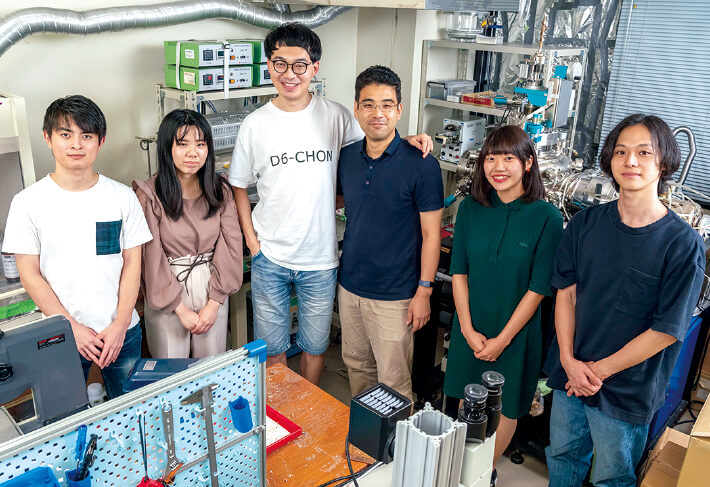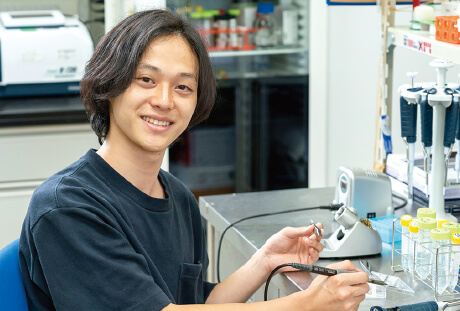
Yuhei Hayamizu
Doctor of Science, Associate Professor, Department of Materials Science and Engineering, School of Materials and Chemical Technology
Laboratory
Researcher Profile
In 2000, graduated from the Department of Electrical, Electronics and Computer Engineering at the School of Science and Engineering, Waseda University. In 2005, completed the doctoral degree program (Doctor of Science) in the Department of Physics at the School of Science, the University of Tokyo. Also in 2005, became a postdoctoral researcher at the Nanocarbon Research Center, National Institute of Advanced Industrial Science and Technology (AIST). In 2008, became a project researcher at the Institute for Solid State Physics, the University of Tokyo. In 2009, became a researcher at the Department of Materials Science and Engineering, the University of Washington. In 2010, appointed as a SAKIGAKE (PRESTO) researcher by the Japan Science and Technology Agency at the University of Washington. Assumed his current position in 2012.
-

Recommended Book
Discourse on the Method (written by Rene Descartes)
This book was recommended to me by a friend when I was in high school and was worried about studying for entrance exams. The section in Part III that discusses the need to walk confidently in one direction without wavering when lost in a forest was a real eye-opener. The book taught me a guiding principle to follow when forced to make difficult choices in life.
The structure and function of proteins that work in the body of organisms are composed of self-assembly that spontaneously forms tissues and patterns. Proteins with approximately 50 or fewer amino acids are called peptides. For many years, research has been conducted on the self-assembly of peptides.
Hayamizu uses an atomic force microscope to conduct nanoscale observation of the structure of peptides on the surface of inorganic solids. In addition, he has developed a method using Raman spectroscopy that identifies molecules by irradiating a laser and measuring scattered light. This has deepened current understanding of self-assembly.
Through collaborative research with the University of Washington, he discovered that peptides can be made to form regular self-assembled structures simply by dropping their aqueous solution onto graphene (one layer of graphite). He observed self-assembly into a nanowire structure even on the surface of single-layer graphene on a silicon substrate. Similar results were obtained on the surface of a single layer of molybdenum disulfide by changing a part of the amino acid sequence. It was observed that the structure of the nanomaterial was modulated by electrical interaction.
Hayamizu says that the idea of combining peptides, which are biomolecules, with two-dimensional nanomaterials such as graphene was born from his background and experience. As an undergraduate, he studied at the Department of Electrical, Electronics and Computer Engineering. But in graduate school, he majored in physics. After obtaining his doctorate, Hayamizu engaged in the synthesis of carbon nanotubes and device development at the National Institute of Advanced Industrial Science and Technology."I learned about peptides while gradually changing my field from electricity to physics and chemistry. I wanted to use the action of biomolecules as one mechanism of materials." (Hayamizu).
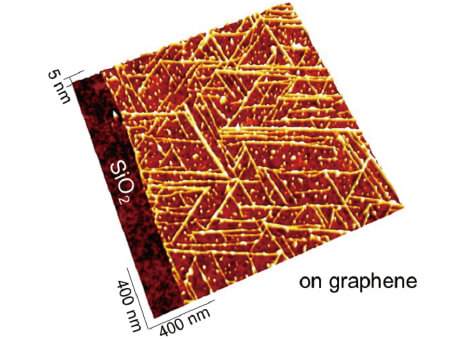
Image of peptides self-assembled on the graphene surface taken by an atomic force microscope. Peptides are aligned regularly along the arrangement of the underlying carbon atoms. It was also suggested that the peptide contains an aromatic amino acid called tyrosine and interacts specifically with the π electron of graphene.
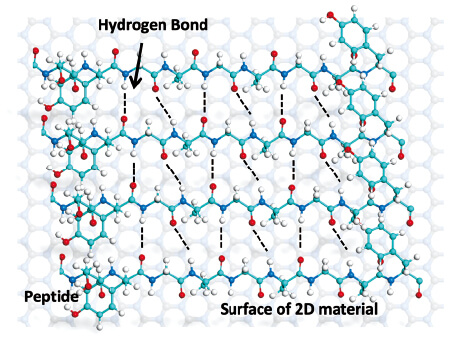
Established peptides that can maintain a self-assembled structure under a biosensing condition by forming regular structures on two-dimensional nanomaterials. The peptides have high structural stability when voltage is applied, and even when under water or in an electrolyte solution.
Hayamizu describes himself as an "outsider" in interface research, a field in which Japan leads. His starting point in the field can be traced back to his time in graduate school.
. Any information published on this site will be valid in relation to Science Tokyo.


